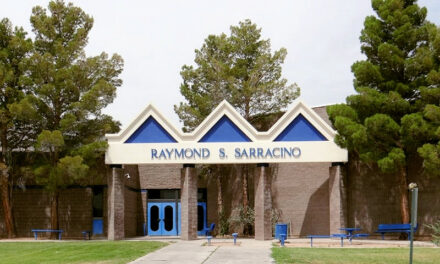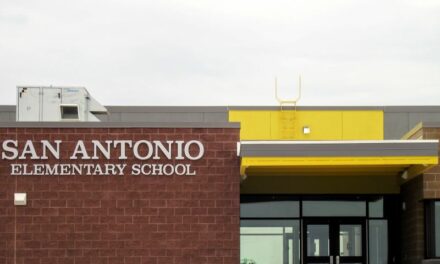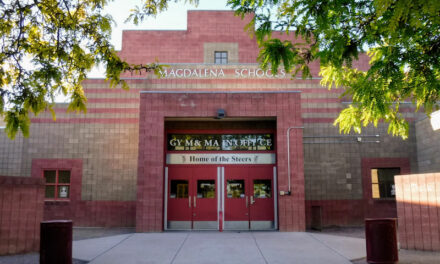When it comes to K-12 education, Bill Green of Quemado, who has just been named superintendent of Alamo Navajo Community School, knows how to get the job done.
For 18 years, he held superintendent positions in Quemado and Reserve.
“I was superintendent at Quemado from 2000 to 2014,” Green said Friday in an interview. “For two of those years, 2012 to 2014, I was superintendent for both Quemado and Reserve schools.”
After a school bond was passed in Catron County and a new school was built in Reserve, he was superintendent for Reserve only between 2014 and 2018.
For the last three-and-a-half years, Green has been Catron’s county manager.

Former superintendent at Quemado and Reserve, Bill
Green took the helm of Alamo Navajo Community School
last week.
Submitted photo
Although well-versed in school administration, Green admits his new position as Alamo superintendent will bring new challenges.
“Alamo’s always been a fairly unique place. I’ve come out here often with teams and am familiar with some of the people here, but working for the Bureau of Indian Education is much different from the public school system,” he said. “In one week’s time, I’ve already been through accreditation through the Navajo Nation and am getting accustomed to all the procedures and requirements.”
He said his vision for the school is to create the safest environment possible.
“Alamo got hit with COVID worse than probably any part of our area. By far,” Green said. “They lost 25 people or more just associated with the school. They were dying.
“In that respect, parents have been reluctant to bring their kids back to school,” he said.
At this point, Green said the school will continue the hybrid program already in place.
“We have an at-home school program and two rotational at-school programs,” he said. “We have kids that are coming in on the A schedule, Monday and Tuesday, and the B schedule is Wednesday and Thursday.”
The idea is to limit the number of people who can be on campus at any one time.
“If we had somebody that tested positive on the campus, we automatically shut down the campus,” he said. “We try to locate all the possible people that were in contact, get everybody tested, and then when we get the negative results we open back up again.”
The school’s student body is over 300 students.
“We’re trying to meet the needs of all the kids we can and slowly get them back into a full day of the school environment,” Green said. “They’re on Zoom if they’re not at the school. I’ve got to say that’s pretty innovative. We’ll maintain that and we’ll also push to get to be able to get students at the in-school environment.
“But we’re going to have to get through another wave of COVID, and I think everybody’s going to have to realize that if you get the vaccine it’s going to be like having the flu or a bad cold. It’s not going to be life or death,” he said. “That’s proving to be the case out here. In our last 16 cases in Alamo, the one person whose infection was serious and had to be in the hospital was the only one of the 16 that had not been vaccinated.”
Green concedes that things are not going to change in the foreseeable future.
“The world is not going to go back to what we call the normal,” he said. “This is going to be part of our life. If the vaccines turn out to work fairly well, and it does show to be the case out here, you may get it but it may not be worse than a bad cold. You’ll get the vaccine and we’ll be OK.”
In the meantime, Green is settling in and looking forward to the rest of the school year and beyond.
“I’m really pleased with my administrative team and the work they do. I’ve met the teachers and staff in the week I’ve been here and I think we’re going to be a great unit,” he said. “Personally, sometimes you’d have two very competent people but their personalities clash. I really don’t see that happening here. I’m pretty impressed with the people I work with.
Don’t think we’re going to knock heads, I think we’re going to work together well.”
He said one of his first challenges will be to build up the teaching staff.
“It’s not going to be something like coming into a situation and having to rebuild the wheel,’” Green said. “We just have to find the spokes and make sure it’s turning.’”


















